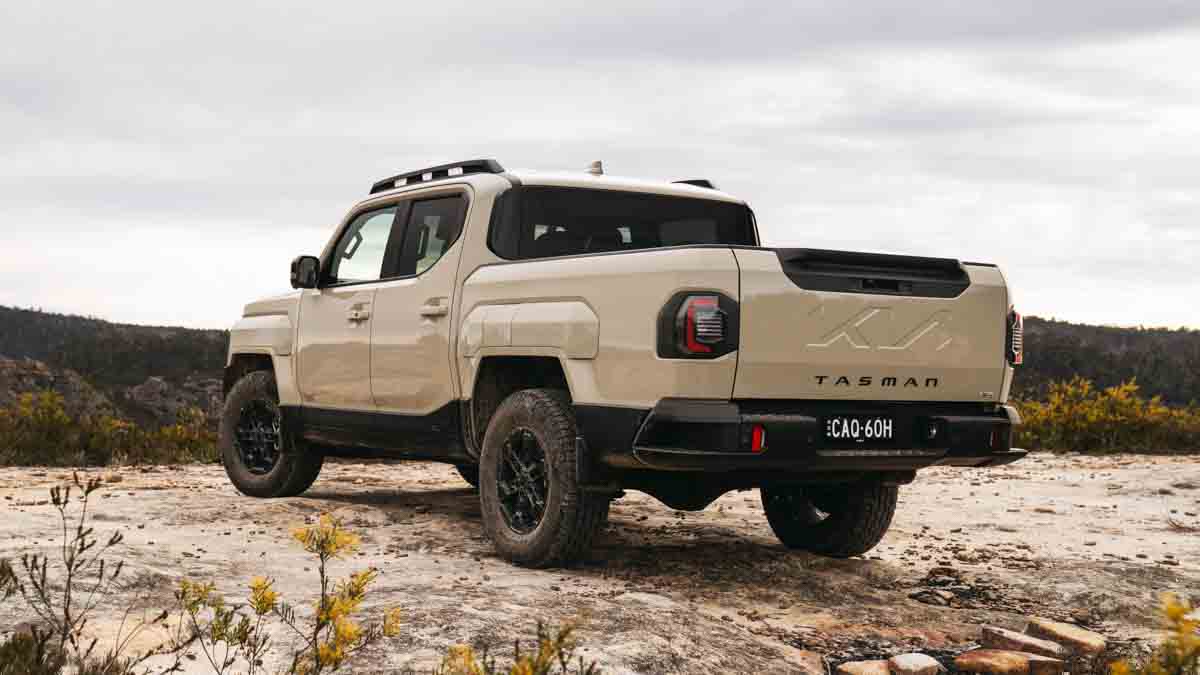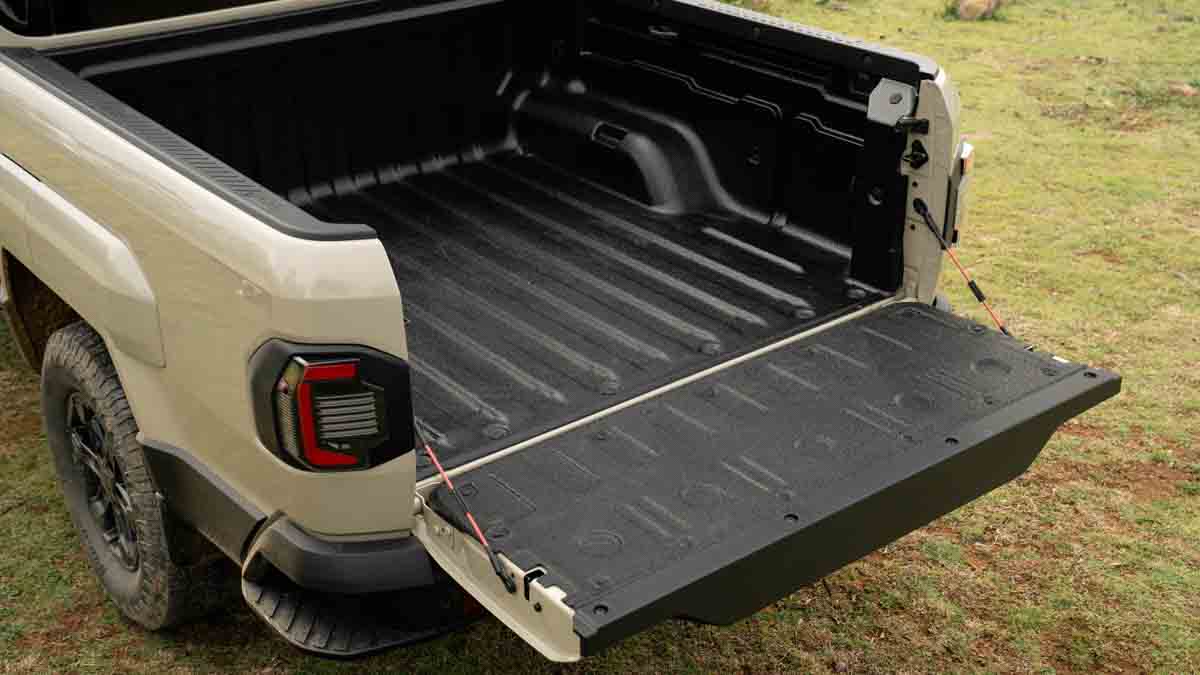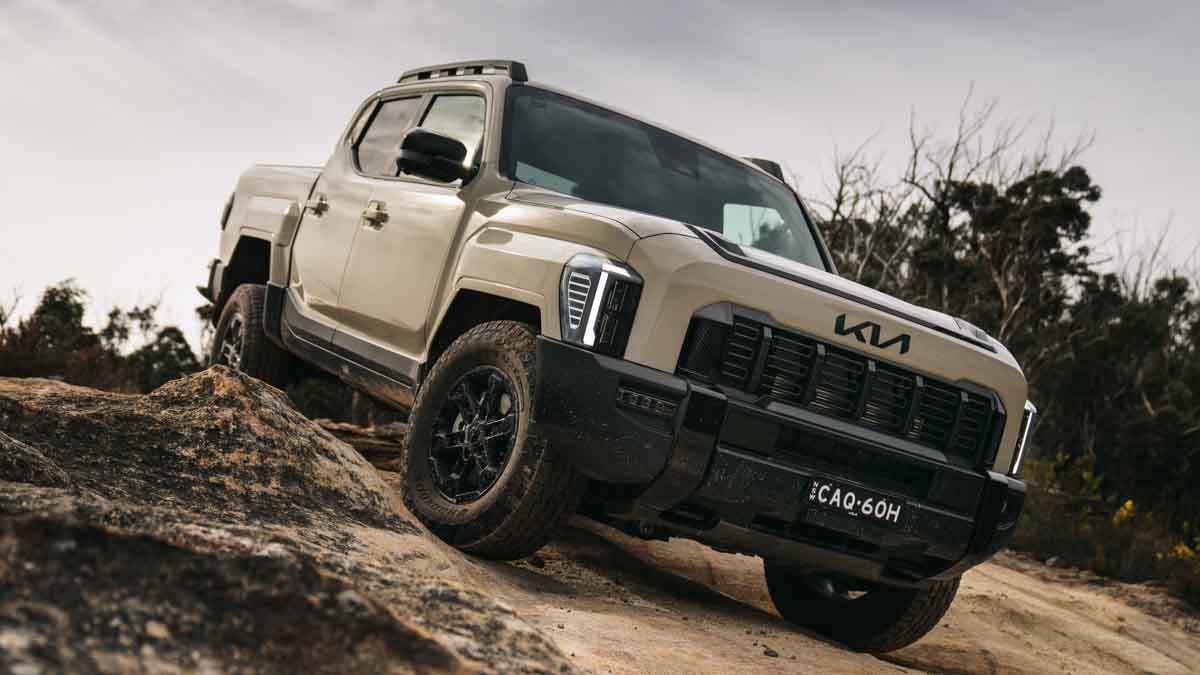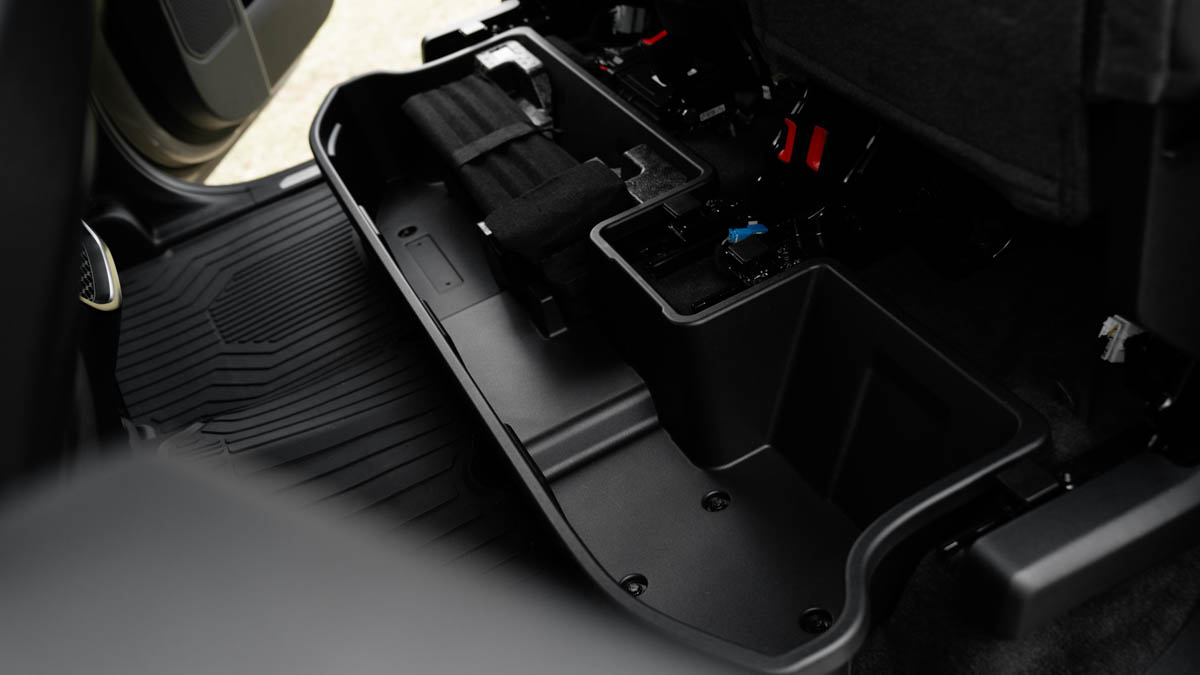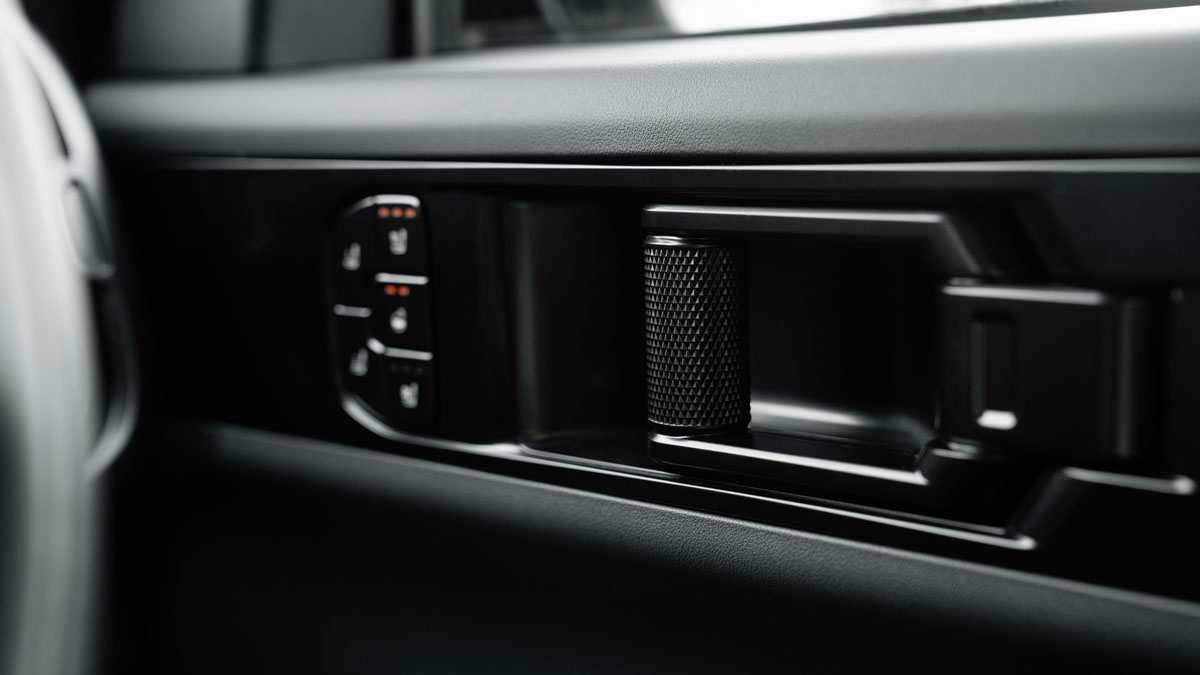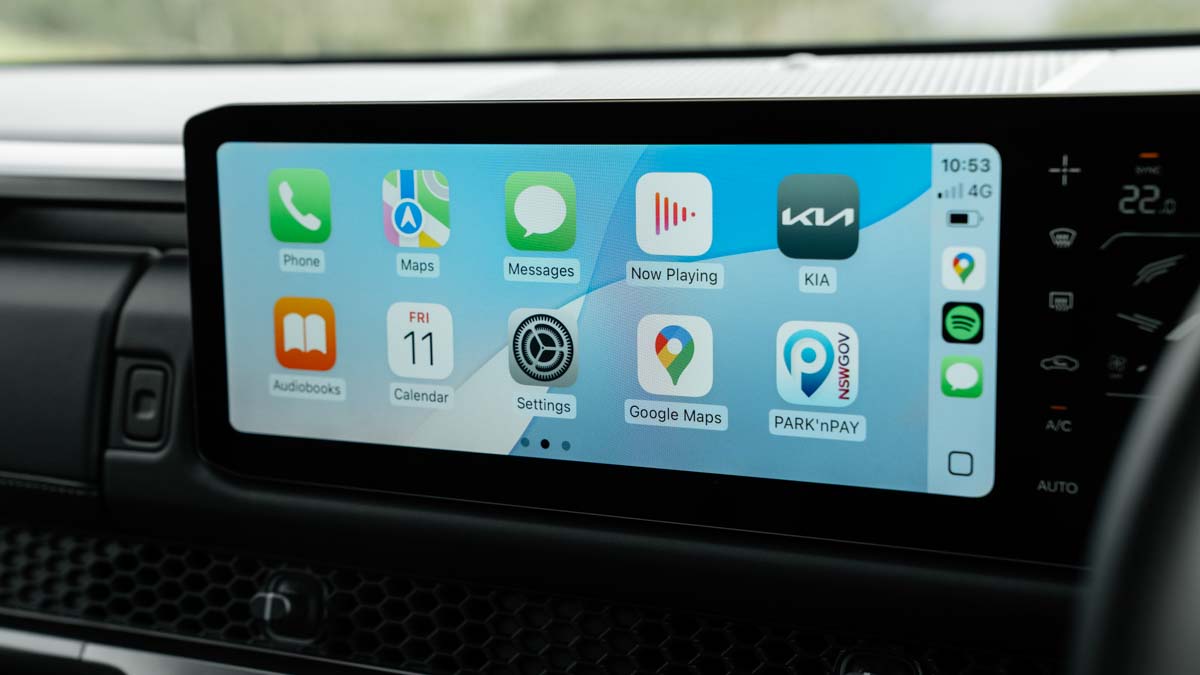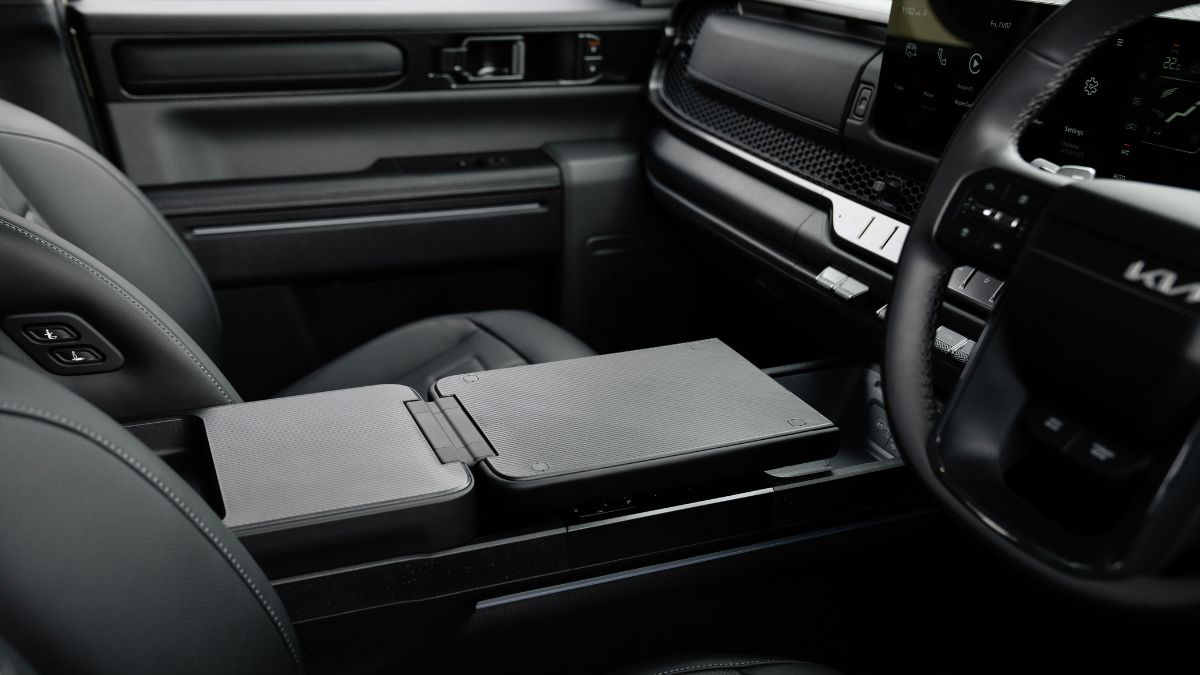The new plug-in hybrid electric BYD Shark 6 has shaken up the dual-cab ute segment, but how does it rate against the PHEV version of the top-selling Ford Ranger?
2026 Kia Tasman X-Pro review
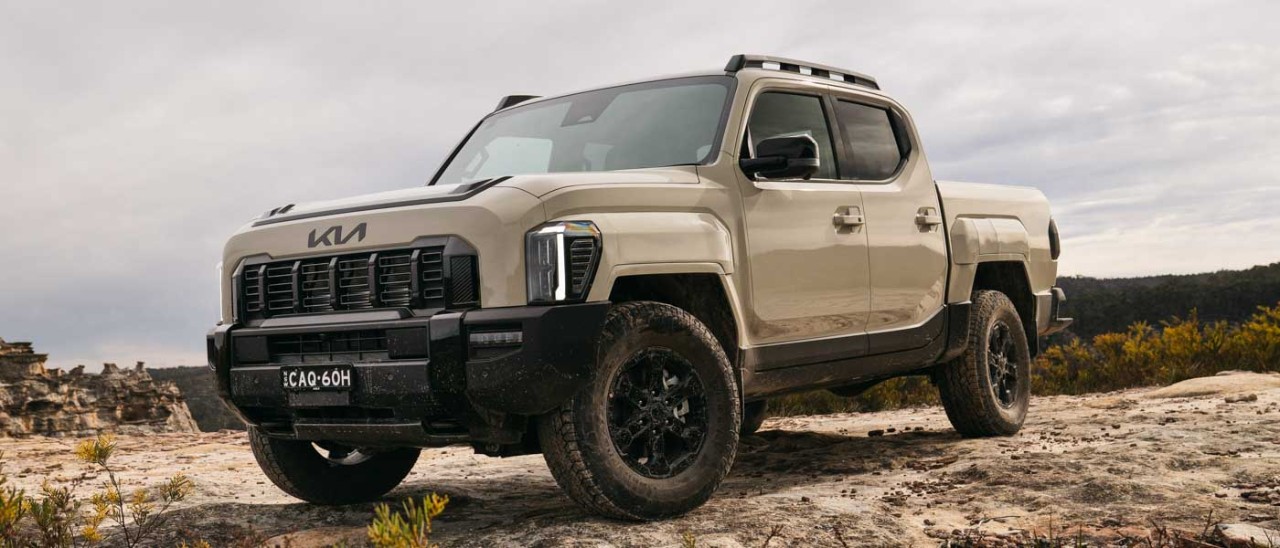
It’s finally here - the 2026 Kia Tasman dual-cab ute has arrived in Australia, almost a year after it was unveiled to mixed reactions over its polarising looks. From pricing to safety, here's what you need to know.
In a mature market segment dominated by established brands like Ford, Toyota and Isuzu, the Kia Tasman needed to do something different. Kia’s designers went bold with the all-new Tasman, creating a bulky, boxy ute that Australian Kia executives will tell you “grows on you” the more you see it on the road.
Is it ugly? Not to this reviewer, but debate over its design may well overshadow what is actually a very capable ute.
Kia has a lot of work to do to establish the Tasman ute in a market where the Ford Ranger is technically excellent, the Toyota HiLux is rugged and dependable and the Isuzu D-Max represents good value buying. Kia has lofty sales targets to meet too, one third of all Tasman global production is being sent here, so the local arm needs to shift 20,000 units a year. Last year. that would have put it in fourth place, but this year, it also needs to compete with the new BYD Shark 6 PHEV ute which has come out of the gates strong and has itself found a place on over 11,000 driveways so far this year.
And more Chinese disruptor brands have set their sights at Australia's buyers. Utes from brands including GWM, JAC and soon MG are all here, or landing soon, with the brands keen to strengthen their footholds in the market.
So, has the Kia Tasman got what it takes to challenge the old guard and fend off the new? Here’s our first impression of the top-spec 2026 Kia Tasman X-Pro.
More: Australia's best utes
On this page
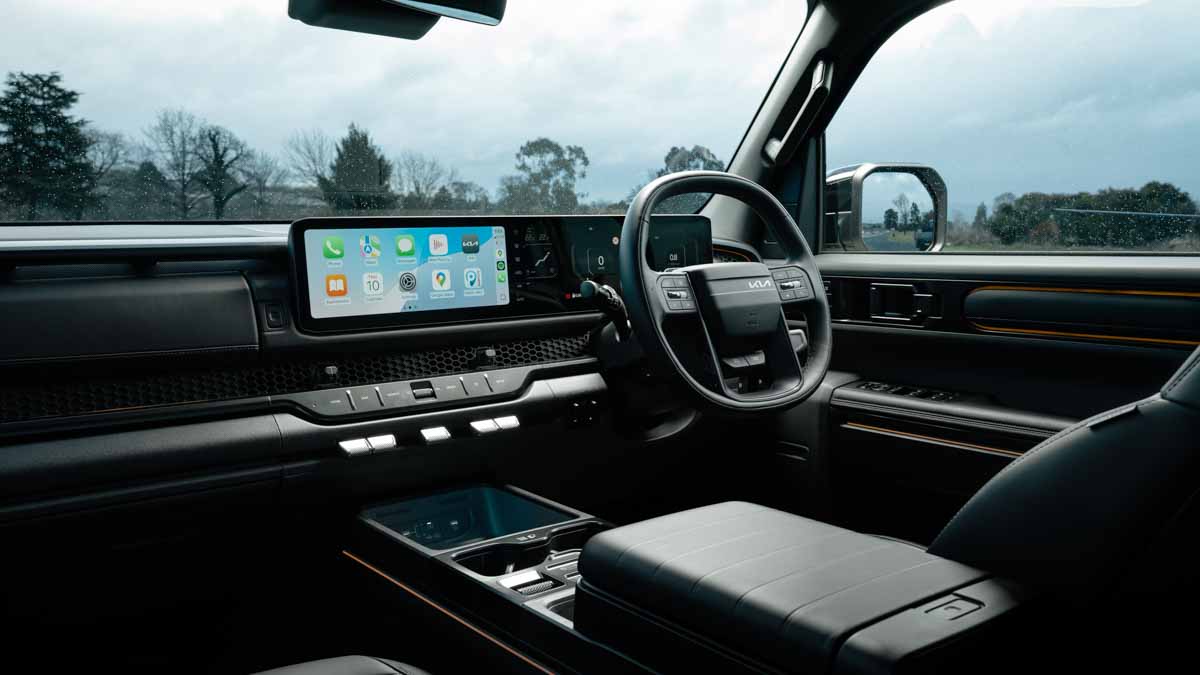
Kia aimed for a best-in-class interior when developing the Tasman ute
How much does the 2026 Kia Tasman X-Pro cost?
Kia is launching with six pickup variants, with Victorian drive-away pricing ranging from $46,490 for the entry-level Tasman S 4x2 to $77,990 for the range-topping X-Pro 4x4 tested here.
You can read more about the full lineup, including detailed pricing and specifications in our full guide to the Kia Tasman.
Following launch, a range of single- and dual-cab chassis models will arrive, priced from $38,010 to $52,740 plus on-road costs. Both pickup and cab-chassis versions can be customised with Kia-developed accessories, including colour-matched steel trays, bull bars, roof racks, tonneau covers, stainless steel side steps, and canopies.
All Tasman models share the same 154kW/440Nm 2.2-litre turbo-diesel engine paired with an eight-speed automatic transmission. Every variant features a premium interior that sets it apart from many rivals, particularly at the more affordable end of the range. A wide-screen Connected Car Navigation Cockpit (ccNC), similar to the system used in Kia’s EV range, is a cabin highlight.
As the flagship, the Tasman X-Pro is loaded with gear and distinguished by its off-road focus and higher comfort levels. It has a wading depth of 800mm and competitive ground clearance of 252mm, directly benchmarked against rivals like the Ford Ranger Wildtrak.
Unique highlights of the Kia Tasman X-Pro
- 17” black alloy wheels with A/T tyres
- Electronic locking differential with on/off switch
- X-Trek mode
- Terrain mode: Snow, Sand, Mud, Rock
- Ground View Monitor
- Premium Sound System (Harmon Kardon)
- Fuel tank undercover protection
- Heated steering wheel
- Ambient mood lighting (Full)
- Heated seats – second row
- Heated and bentilated seats – first row
- Powered front seats with driver memory function
- Sunroof
- Off-road page (steering direction, steering angle, oil levels, etc)
Like the rest of the Kia range, the Kia Tasman is backed by he brand’s seven-year/unlimited kilometre warranty which is extended to all genuine accessories.
In addition to national drive away pricing, the Kia Tasman offers capped-price servicing for owners that choose to service at a franchised dealer. The schedule covers the first seven years of ownership with intervals set at 12 months/15,000km. Depending on kilometres travelled, the cost for a service for the Kia Tasman X-Pro varies between $361 and $821. A pre-paid servicing package is also available covering either three years ($1371), five years ($2834) or seven years ($3929).
2026 Kia Tasman X-Pro exterior design
YouTube commentary would have you believe the Tasman was “hit with the ugly stick”, but I personally don’t subscribe to that view.
While Kia Australia reportedly preferred a more muted design, the bold look chosen by Kia’s global HQ stands out in a sea of conservative utes. For Australian buyers who like to show off the latest and newest vehicles, that’s a plus - and early adopters have already begun sharing their new Tasmans online.
The aftermarket is eager, with GVM upgrades and wheel-and-tyre packages already in development.
The Kia Tasman’s bold stance is offset by some surprising design choices, including plastic-look front fenders and headlamps positioned at the far extremities of the nose - prime territory for low branches or kangaroo strikes in Australia.
Eight paint colours are available, with two exclusive to X-Line and X-Pro models. Black fenders are standard, though buyers choosing tan or white can opt for colour-coded fenders for a more resolved look.
Clever design touches on the Kia Tasman X-Pro include an external tub step, a right-hand-side rear wheel-arch storage cubby, and a left-side integrated filler cap.
The X-Pro’s 17-inch black rims are the only factory-fitted all-terrain tyres in the range. Frequency-selective shock absorbers and 14mm more spring height give it the most aggressive off-road stance in the lineup, with a 32.2-degree approach angle and 252mm clearance.
At 5410mm long, the Tasman is longer than the Ford Ranger and Toyota Hilux, but not as long as the BYD Shark 6.
Tray space was designed to be competitive within the light commercial vehicle class with capacity for an Aussie pallet. Payload is 1013kg for the X-Pro with greater payloads available lower down the range for fleets and trades. Gross vehicle mass (GVM) is 3250kg and gross combined mass (GCM) is 6200kg.
What is the Kia Tasman X-Pro like inside?
Kia has nailed the brief here, delivering a cabin that blends premium SUV finishes with ute-ready durability. There’s ample storage for laptops, clipboards, and tools, plus robust switchgear and chunky handles.
For off-road use, there are grab handles in both front and rear rows, and there are clever zippable neoprene pockets on the back of the front seats to keep gear out of sight.
All grades feature the same large infotainment screen with wireless Apple CarPlay and Android Auto compatibility.
Similar to the screens found in the Kia EV9 electric SUV, the single display houses a heating control panel, as well as a configurable digital driver information display.
An integrated table in the centre console acts as a computer table when the vehicle is stationary so quotes and invoices can be generated while on the job.
The X-Line and X-Pro offer twin 240V sockets, one in the vehicle and one in the tray, so a laptop or tools with a maximum output of 400W can be powered on the go.
Up front, seating is plush and comfortable enough for longer drives. Kia’s early research suggested the Isuzu D-Max's front seats were class-leading, so it benchmarked those seats with the desire to improve on them. The result is a seat which offers excellent support for long drives and off-road adventures. The X-Pro model includes an artificial leather upholstery, with heating and ventilation in the front seats and heating in the two outer seats of the second row.
In the rear of the Tasman, there’s plenty of room for three. Headroom and legroom should suffice for six-footers, with Kia moving away from the typical hard seating experienced by rear seat passengers with upright seat back. In the X-Line and X-Pro, the Kia Tasman rear seatback can recline up to 30 degrees.
Under-seat storage offers up to 45 litres, the largest in any standard dual-cab ute. With a rise in thefts from vehicles, this storage helps to keep items away from prying eyes.
Is the Kia Tasman X-Pro good to drive?
All Australian Kia Tasman variants are powered by a 2.2-litre turbocharged diesel engine paired with an eight-speed automatic transmission. Producing 154kW and 440Nm, the powertrain may seem under-specced on paper compared with the 3.0-litre turbo units favoured by many rivals.
In practice, however, it feels well suited to urban driving, delivering accessible torque across a broad rev range and performing confidently in low-speed off-road manoeuvres.
Our test route included both on-road and off-road driving centred around Bathurst, New South Wales. Across a variety of sealed-road conditions, the Tasman X-Pro returned a respectable 8.6L/100km — close to the official ADR Combined claim of 8.1L/100km.
On-road comfort was similarly respectable. Unladen and running all-terrain tyres, the rear leaf-sprung Tasman X-Pro displayed a fairly typical bouncy ride over patchy country bitumen. Ride quality improved notably as road surfaces smoothed out, with minimal tyre noise intrusion thanks to Kia’s attention to cabin refinement.
Off-road, where Kia’s engineers aimed to match or exceed the capabilities of the Ford Ranger and Toyota HiLux, the Tasman proved capable. On loose surfaces it felt assured, with Terrain Mode helping less experienced drivers manage traction on gravel and soft ground. Its 252mm ground clearance and aggressive approach angle meant the pre-arranged rocky track - designed to showcase its 4x4 credentials - posed little challenge. Steering effort is light, and the Tasman’s agility is surprisingly good for its size.
Engaging the Tasman X-Pro’s X-Trek mode (also known as crawl control) made for smooth, controlled progress over uneven terrain. While purists may lament the absence of a locking front differential, our first impressions suggest the Tasman’s electronic traction systems are smart enough to handle most conditions a buyer is likely to encounter in a factory-spec ute.
More: Eight essential things you need for a safe offroad adventure
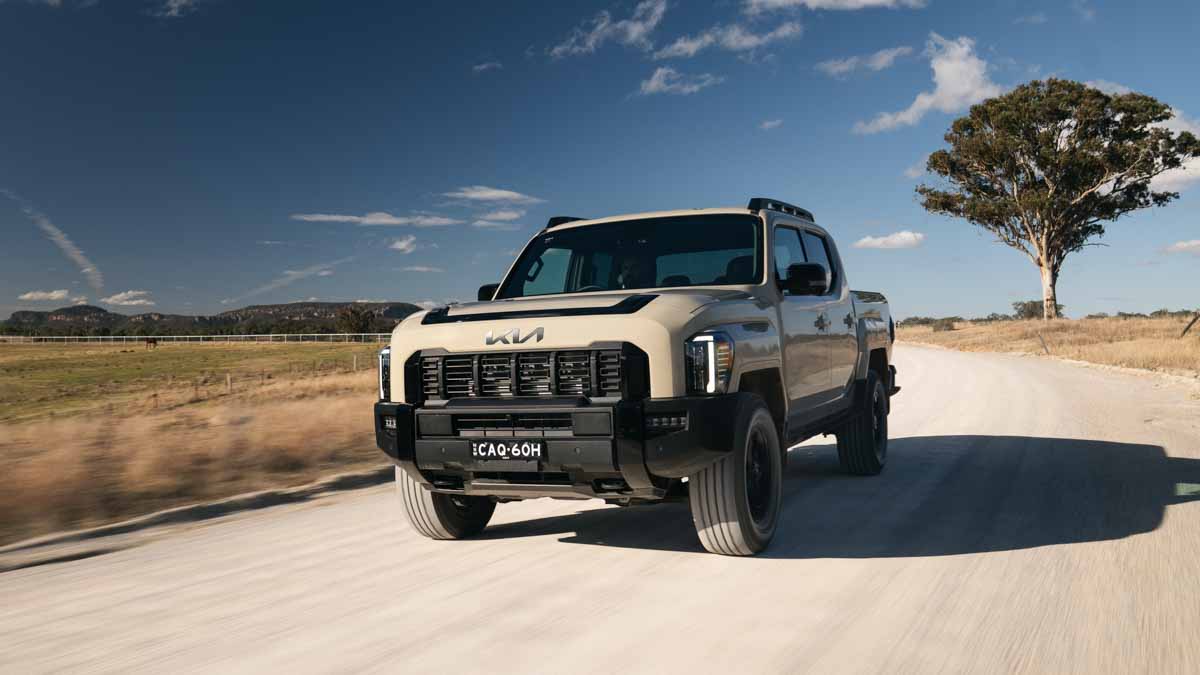
The Kia Tasman X-Pro offers terrain mode including an exclusive-to-X-Pro rock mode
How safe is the Kia Tasman X-Pro?
If there’s one notable drawback to the Tasman package, it’s the absence of an ANCAP safety rating for the off-road-focused X-Line and X-Pro models, as well as the entry-level 4x2.
To secure a five-star rating - a must-have for many fleet buyers - Kia submitted the lower-spec S, SX, and SX+ variants for testing. These are equipped with a lower valance panel that provides an added layer of pedestrian protection, a feature not fitted to the off-road models. The more aggressive front-end design of the X-Line and X-Pro means the valance can’t be added without compromising ground clearance and approach angle.
As the top-spec models are expected to appeal primarily to private buyers, it will be up to ANCAP to conduct independent testing to determine what rating applies to these variants.
Notwithstanding the missing ANCAP score, the Tasman X-Pro is engineered with a strong suite of passive and active safety features. At its core is a robust body structure reinforced with high-strength steel, designed to absorb and disperse crash forces from the front bumper through to the rear.
Active safety is also a priority. All models include Kia’s Highway Driving Assist 2, combining adaptive cruise control with lane-keeping functions. Higher trims, including the X-Line and X-Pro, add blind-spot view monitoring, a surround-view camera, and rear cross-traffic collision avoidance assist.
Towing safety is another highlight. Every Tasman features an integrated trailer controller for precise calibration, along with Trailer Sway Control and a dedicated Tow Mode to assist less experienced drivers by optimising gearing. A set of cabin display screens also guides drivers through safe towing setup procedures before departure.
Off-road, the Tasman’s downhill brake control system adds another layer of safety by automatically managing braking and gear selection during steep descents..
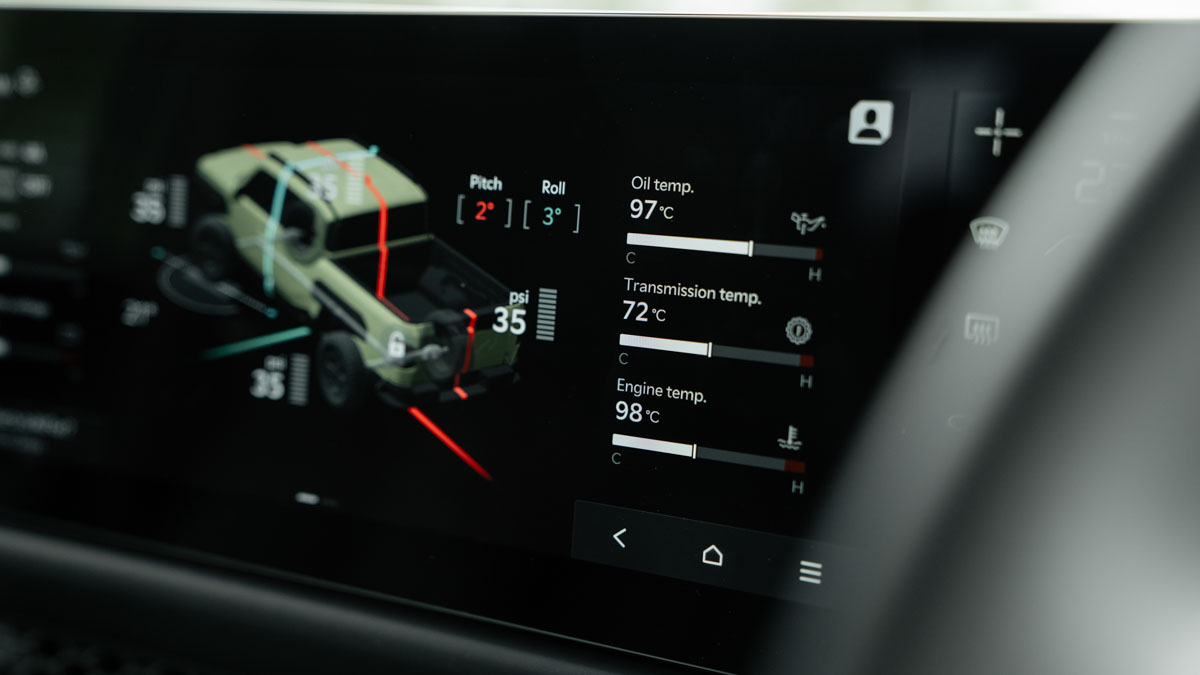
X-Pro models feature an off-road display that shows key vehicle data
How does the Kia Tasman compare?
It is probably no surprise that the Kia Tasman compares well with its main rivals, it has the advantage of being late to market, so designers were able to take the very best aspects of the most popular utes on sale in Australia and apply them to the Tasman.
This means its dimensions are slightly larger, its features are superior, and its towing/payload stats meet the needs of the broadest range of prospective buyers.
Pricing wise the Tasman isn’t the cheapest in the segment, but its warranty and servicing costs are competitive. It has the benefit of a seven-year warranty which is better than the Ford Ranger and Toyota HiLux.
Compared with other diesel utes, the Kia Tasman’s engine may be its main shortcoming, lacking the outright punch of torquier rivals. That said, it’s far from underpowered and delivers when called upon. Proven in the Kia Sorento, this engine should also provide strong long-term reliability when serviced on schedule.
More: Australia’s best medium SUVs
Should I buy a Kia Tasman X-Pro?
If you’ve read this far, the Tasman’s looks probably haven’t scared you off - and they shouldn’t.
Kia has delivered a dual-cab ute that tackles its competition head-on, offering excellent comfort, clever practicality, and strong off-road ability.
In terms of product execution, the Tasman hits the mark. Achieving its sales goals, however, could prove more challenging. It’s entering an ultra-competitive market, with buyers spoilt for choice - including innovative plug-in hybrid electric utes like the BYD Shark 6 and legacy stalwarts like the Ford Ranger PHEV. Kia Australia will be hoping it’s the right ute at the right time, not the other way around.
The information provided is general advice only. Before making any decisions please consider your own circumstances and the Product Disclosure Statement and Target Market Determinations. For copies, visit racv.com.au. As distributor, RACV Insurance Services Pty Ltd AFS Licence No. 230039 receives commission for each policy sold or renewed. Product(s) issued by Insurance Manufacturers of Australia Pty Ltd ABN 93 004 208 084 AFS Licence No. 227678.
